Discover how to grow and care for the bold, eye-catching Philodendron ‘Black Cardinal’ houseplant variety, including ideal light, temperature, soil and watering needs, plus design tips.
If you’re looking to add a bold, eye-catching houseplant to your collection, the Philodendron ‘Black Cardinal’ is an excellent choice. With its stunning reddish-black leaves and relatively easy care needs, it’s no wonder this variety has become a popular ornamental plant. In this guide, we’ll cover everything you need to know to successfully grow and care for your own ‘Black Cardinal’ philodendron.
What is a Philodendron ‘Black Cardinal’?
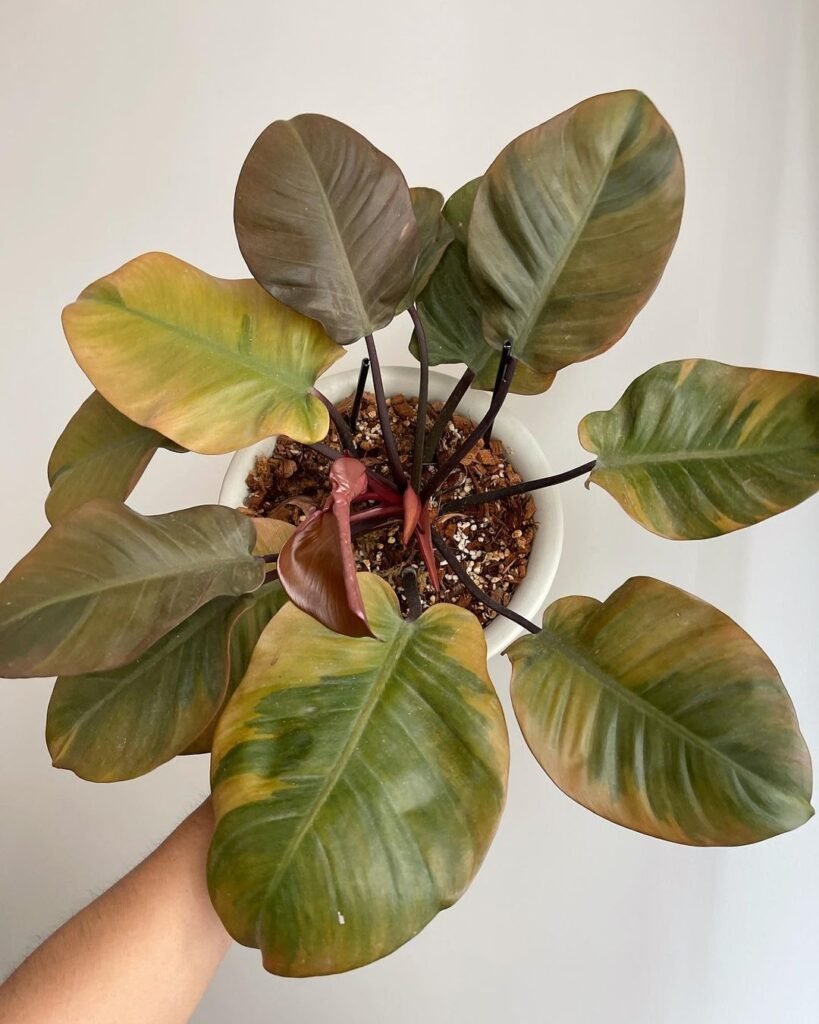
The ‘Black Cardinal’ is a hybrid cultivar of philodendron, a diverse genus of flowering plants in the arum family (Araceae). It is a cross between the Philodendron erubescens and Philodendron incredibly dwarf varieties.
Most philodendrons have large, glossy green leaves and are widely grown as houseplants or used in outdoor landscaping in warm climates. The ‘Black Cardinal’ stands out for its uniquely colored, almost black foliage and compact, trailing growth habit.
This cultivar produces large, arrowhead-shaped leaves varying from deep burgundy red to an intense blackish-purple in color. The leaves have prominent reddish veining and can reach up to 12 inches long when grown in ideal conditions.
As it matures into an adult plant, the ‘Black Cardinal’ develops a trailing vining habit with stems that can reach 3-4 feet long. However, it maintains an overall compact, manageable size when grown in containers, making it well-suited for indoor gardening.
This showstopper of a houseplant adds striking contrast and interest when paired with other green or variegated foliage. While not as easy care as some other philodendrons, providing the proper environmental conditions allows the ‘Black Cardinal’ to thrive indoors.
Ideal Growing Conditions
Like most philodendrons, the ‘Black Cardinal’ variety prefers conditions that mimic its natural tropical to sub-tropical environment in the rainforests of South America. Pay close attention to the following growing requirements.
Light
Bright, indirect sunlight is ideal for this plant. Aim for an east or west-facing window that receives 4-6 hours of gentle morning or evening light each day. Keep it out of direct, intense midday rays which can scorch the leaves.
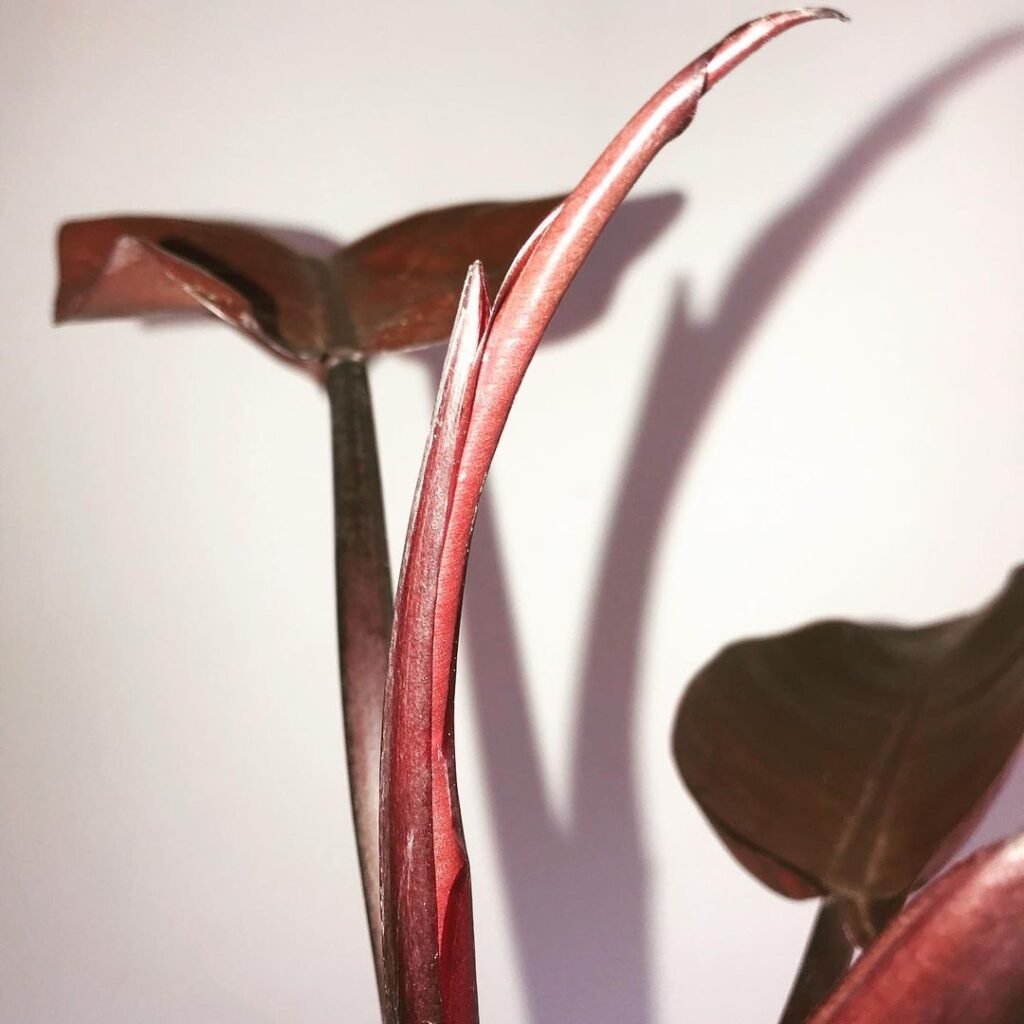
In lower light conditions, the leaves will lose their deep blackish color and may start to develop green tones. Too much shade also leads to smaller leaves and leggy growth.
Temperature and Humidity
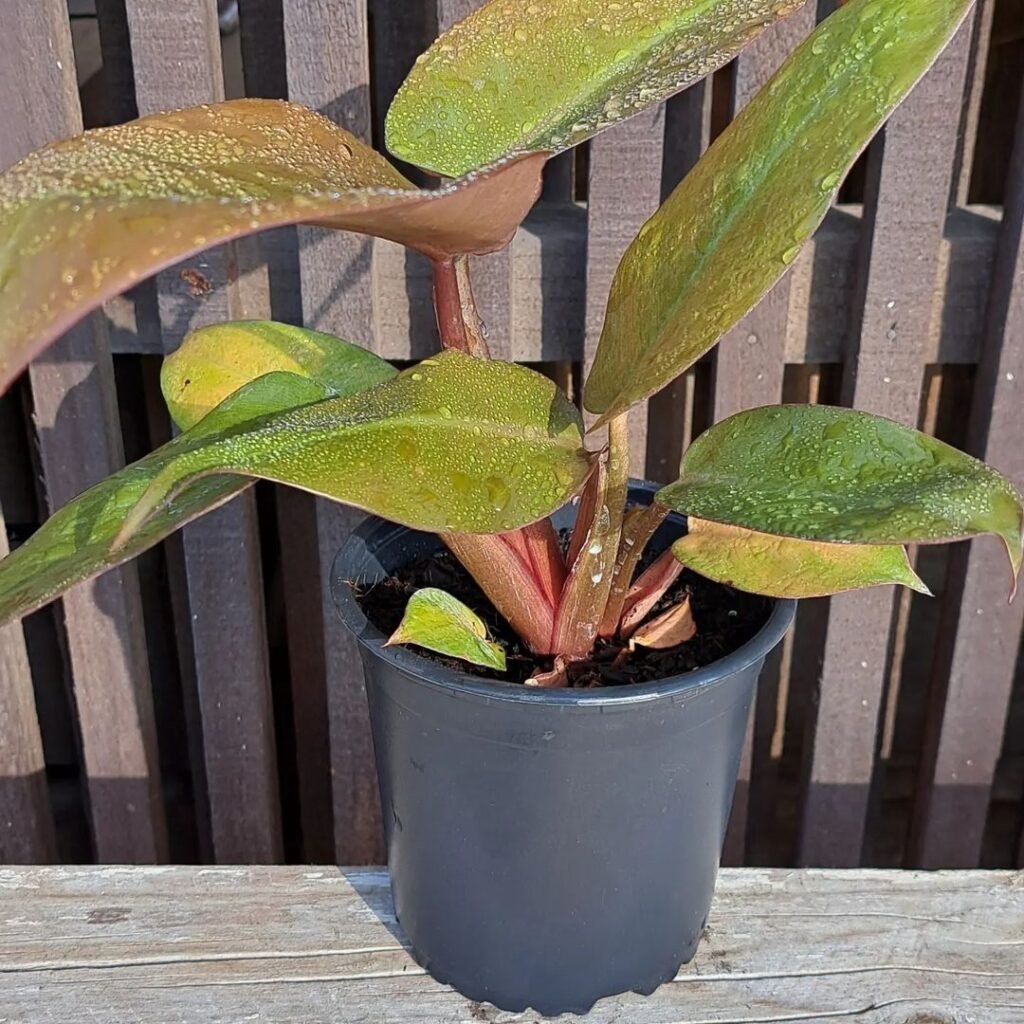
The ‘Black Cardinal’ does best in average household temperatures between 65-85°F. Cold drafts or overly dry air from heating vents can damage the leaves.
High humidity above 50% is also crucial for keeping this tropical plant happy. Use pebble trays, humidifiers, or frequent misting to raise moisture levels around your plant. Drying out also causes the leaves to develop crispy brown edges.
Soil
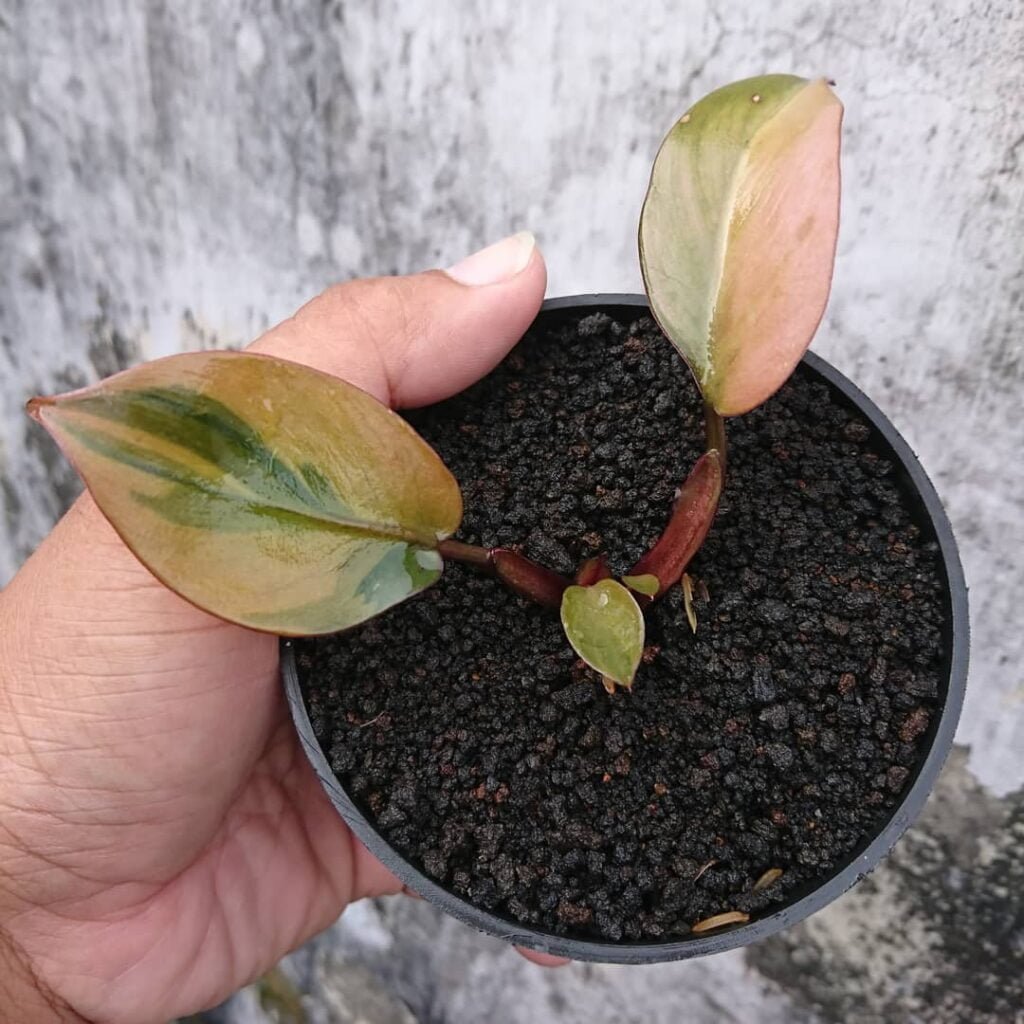
A well-draining, high quality potting mix rich in organics is ideal for growing this philodendron in containers. Look for mixes formulated for aroids containing ingredients like peat moss, perlite, bark, and compost for aeration and moisture retention.
Adding a handful of horticultural charcoal to the mix can also help maintain the black leaf coloration. The soil should have good drainage but still retain adequate moisture.
Watering
One of the trickier aspects of ‘Black Cardinal’ care is determining the right watering schedule. The soil should be allowed to dry out slightly between waterings, but not to the point of completely drying out.
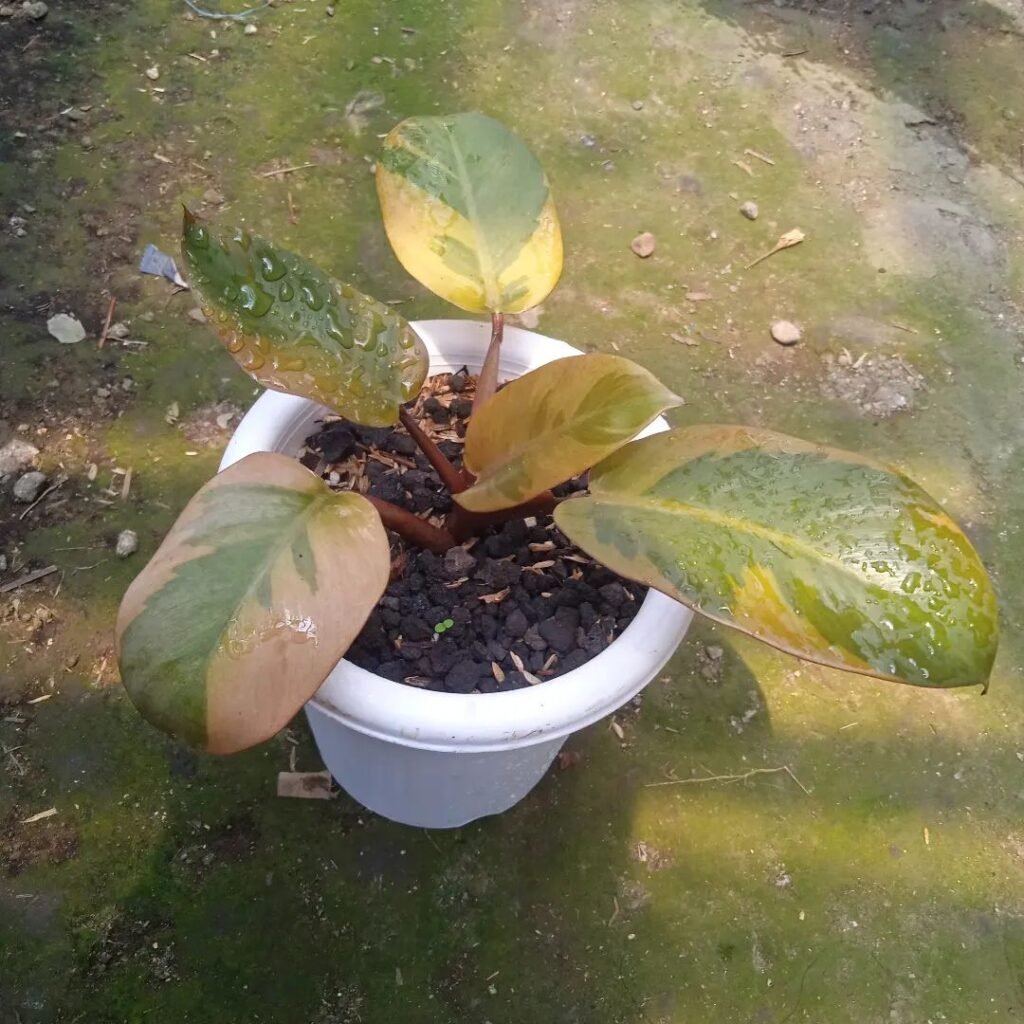
Check the soil moisture every few days and water thoroughly once the top 2-3 inches of soil begins to dry out. Then allow it to drain completely. Signs of improper watering include leaf discoloration, wilting, and root rot.
Aim for consistent, even moisture year-round. Overly wet or overly dry soil can cause serious plant health issues for the ‘Black Cardinal.’
Fertilizing

Feed your plant every 4-6 weeks during the spring and summer growth season using a balanced liquid fertilizer diluted to half strength. You can also top dress with a slow-release fertilizer to provide steady nutrition.
Fertilizers made for blooming houseplants, aroids, or containing micronutrients are ideal choices. Avoid excess nitrogen, which causes leggy growth at the expense of the leaves.
Prune away any discolored leaves or spindly growth to maintain a full, bushy habit. Overfertilizing leads to fertilizer salts building up in the soil and leaf burn issues.
Potential Problems
When grown in the appropriate environment, ‘Black Cardinal’ philodendrons are generally pest and disease-free. However, some common issues to watch for include:
- Yellowing leaves: Often a sign of overwatering, nutrient deficiency, or old age
- Brown leaf tips/edges: Caused by dry air, underwatering, or fertilizer salts
- Leaf spots: Various fungal or bacterial leaf spot diseases thrive in humid conditions
- Pests: Mites, mealybugs, aphids, thrips, and fungus gnats are common houseplant pests
- Root rot: Overwatering leads to mushy, smelly roots and lower leaf yellowing
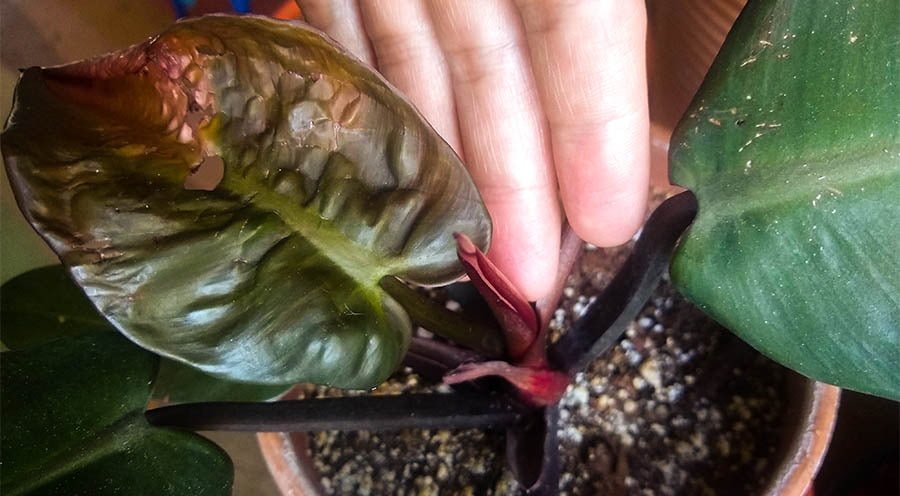
The two biggest problems tend to be improper watering and low humidity, which manifest as leaf discoloration and crisping. Use insecticidal soaps or neem oil to treat insect infestations.
Discolored growth is usually a sign of environmental or cultural conditions being off. Adjusting the watering schedule, humidity levels, and light exposure can help your plant recover its trademark black foliage.
Design Tips for ‘Black Cardinal’ Philodendrons
Thanks to its striking coloration and compact trailing form, the ‘Black Cardinal’ is a versatile houseplant that works beautifully in many indoor design applications. Here are some tips for displaying it:
Hanging Baskets
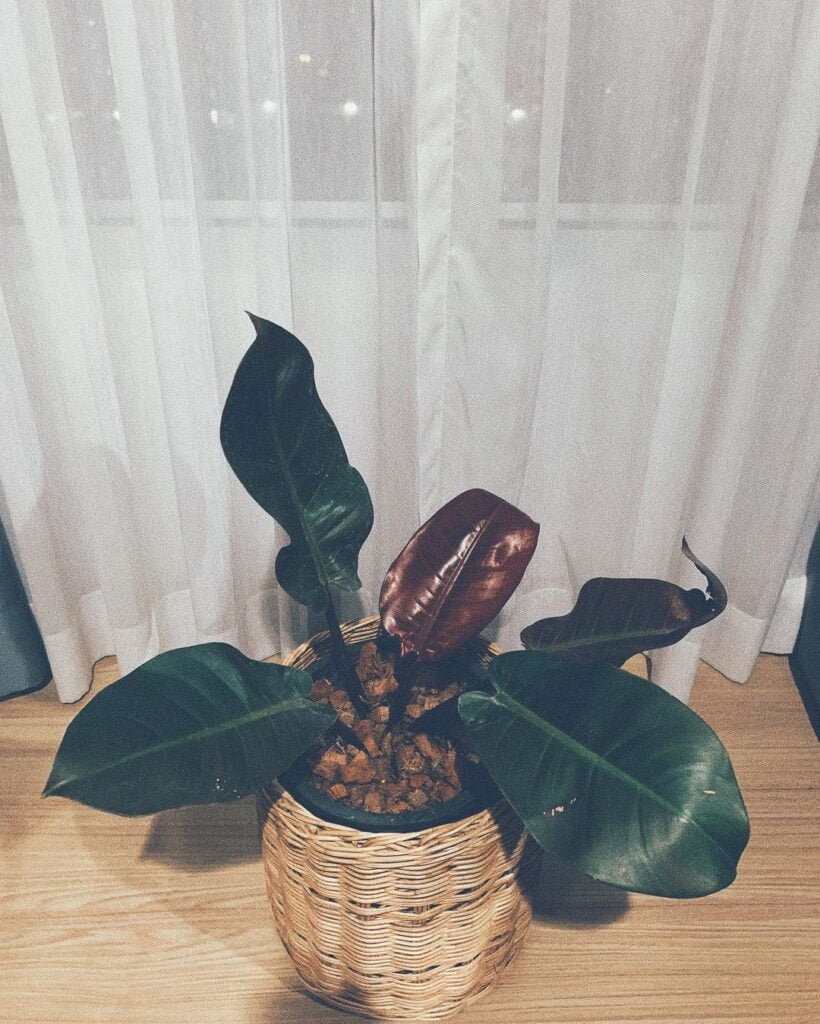
One popular way to grow the ‘Black Cardinal’ is in a hanging basket or elevated planter where the trailing vines can spill over the sides. The deep burgundy and black foliage creates an eye-catching display when the plant is allowed to trail and cascade freely.
Be sure to use a basket or container with drainage holes and fill it with a well-draining potting mix suitable for philodendrons. Provide the plant with bright, indirect light and consistent watering.
Combined Planters

You can also grow the ‘Black Cardinal’ in mixed combination planters, allowing the vining stems to trail over the edges and intermingle with other upright plants and textures.
For example, try planting it with an upright dracaena plant and a spilling pothos or tradescantia variety. The deep black leaves of the philodendron combine wonderfully with contrasting greens and colors for beautiful visual interest.
Shelves and Mantles

If you prefer to grow your ‘Black Cardinal’ in an individual container, show it off on an elevated shelf, mantle or plant stand at eye level. The gorgeous clusters of arrowhead-shaped leaves make a striking specimen.
Terra cotta, ceramic, and other porous containers work well for these moisture-loving plants. Just be sure to place a saucer or drip tray underneath to catch any excess drainage.
Terrariums
The compact size and trailing growth habit of the ‘Black Cardinal’ philodendron also lends itself well to growing in enclosed terrariums. While it can’t be grown fully aquatically, the humidity and airflow provided by a terrarium set-up can benefit this tropical plant.
Just make sure the terrarium has adequate drainage holes so the soil doesn’t stay too saturated. Pair your philodendron with other humidity-loving plants like ferns, fittonias, or peperomias.
No matter how you choose to incorporate the Philodendron ‘Black Cardinal’ into your indoor gardening, you’re sure to make a bold statement with its rich, dark foliage and cascading growth habit. With proper care and the right environment, this striking plant can thrive for many years as a gorgeous houseplant.
Some final tips for success:

- Provide bright, indirect light and high humidity
- Maintain consistent soil moisture, not too wet or dry
- Feed with a balanced fertilizer during the growing season
- Prune away discolored or leggy growth to maintain bushiness
- Check regularly for any pests or disease issues
- Repot every 2-3 years in fresh potting mix to reinvigorate
With its fairly compact size yet eye-catching presence, the Philodendron ‘Black Cardinal‘ is a worthwhile addition to any houseplant collection. While it requires some specific care, the payoff is having a beautiful, trailing plant with magnificent black foliage unlike any other.
With some time, patience, and the right conditions, you can enjoy the striking good looks of this uncommon philodendron variety as a centerpiece of your indoor garden. Its durability and adaptability ensure it will be long-lasting accent you can appreciate for years to come.
Pingback: Lemon Lime Maranta Care Guide -
Pingback: All About Aglaonema Plants: Care Tips for Gorgeous Greenery
Pingback: Black Vine Weevil : Identification & Natural Control Methods
Pingback: Guide to Cucumber Plant Stages : From Seed to Harvest